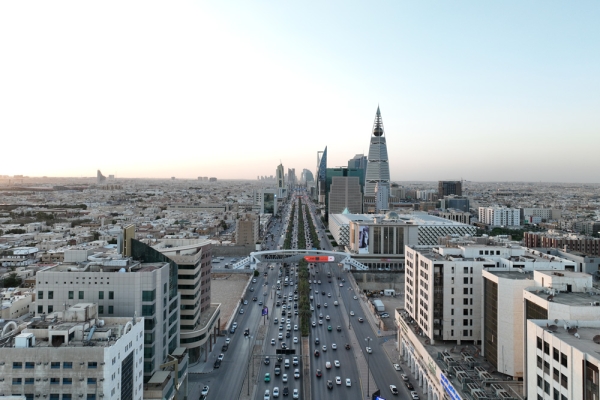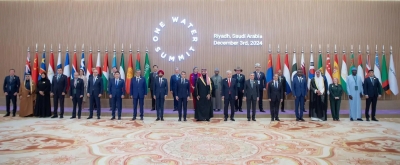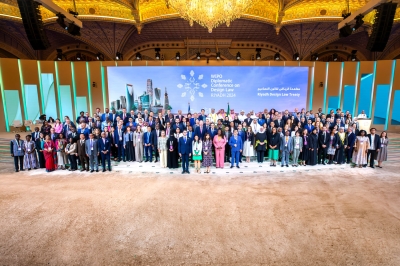

Economic Development in the Kingdom of Saudi Arabia began in 1970 with the approval of the first five-year development plans during the reign of King Faisal Bin Abdulaziz Al Saud. This was preceded by earlier planning efforts, such as the preparation of the first official state budget in 1934.
Saudi Vision 2030, launched in 2016, represents the most recent model of developmental planning, redefining the concept of development within new frameworks. Its strategy is built on three fundamental pillars that collectively form the foundations of economic development. This expanded concept includes lifestyle, living standards, natural resources, energy, labor force, and other factors related to the advancement of societies and national economies.
The Kingdom has a growing economy, considered one of the strongest in the Middle East. Its strategic location has enhanced its international position as a key driver of global trade, serving as a connecting hub for the three continents of Asia, Europe, and Africa. The Kingdom's role on the international economic stage has become prominent, recognized as a major economic power, which qualified it for membership in the G20. Additionally, as one of the world’s leading oil exporters, the Kingdom is the largest country in the Gulf Cooperation Council (GCC) in terms of population and economic strength.
Saudi Arabia development plans
The Kingdom initiated its five-year development plans in 1970, with the overall aim of strengthening national defense, ensuring internal security and stability, and achieving a high rate of economic growth. These plans focused on developing economic resources and maximizing oil revenues for the longest period possible while preserving depletable resources. They also sought to reduce the country's reliance on crude oil exports by diversifying the production base. Additionally, the plans aimed to develop human resources by expanding education and training, improving health levels, increasing the well-being of all social groups, supporting social stability in response to rapid societal changes, and building the necessary infrastructure to achieve these general goals.
Saudi Vision 2030 and economic development
Saudi Vision 2030, launched under the guidance of the Custodian of the Two Holy Mosques, King Salman Bin Abdulaziz Al Saud, and crafted by Crown Prince Mohammed Bin Salman Bin Abdulaziz, who is also the Prime Minister and Chairman of the Council of Economic and Development Affairs, represents the latest model of developmental planning. It is based on an interactive approach, unlike the traditional method that characterized previous development plans. The strategy is built on three fundamental pillars, collectively forming the foundations of economic development, with a broad concept that includes lifestyle, living standards, natural resources, energy, labor force, and other elements linked to societal advancement and national economies. Additionally, Saudi Vision 2030 aims to strengthen the economic infrastructure and shift towards a more diverse and sustainable economy.
The first pillar of Saudi Vision 2030 focuses on building a vibrant society, which serves as a solid foundation for economic prosperity. The second pillar emphasizes achieving a thriving economy by creating job opportunities for everyone and building an education system aligned with the needs of the labor market. The third pillar targets the public sector to build an ambitious nation, outlining the characteristics of an effective government by enhancing efficiency, promoting a performance-driven culture, and empowering energy and human resources.
The Kingdom has begun implementing several transformative and executive programs to achieve the goals of Saudi Vision 2030. These include the National Transformation Program, which aims to develop infrastructure and create an environment that enables the public, private, and non-profit sectors to achieve the vision's objectives. Another key initiative is the Fiscal Sustainability Program, which seeks to strengthen financial management and restructure the Kingdom's financial situation.
The vision has several targets by 2030, including elevating the Kingdom’s economic ranking to be among the top fifteen globally, increasing the share of non-oil exports to at least 50 percent of the non-oil gross domestic product (GDP), improving the Kingdom's ranking in the Logistics Performance Index to twenty-fifth globally and first regionally, ensuring the private sector contributes 65 percent to the GDP, and advancing to one of the top ten positions in the Global Competitiveness Index, among other objectives.
The role of the financial sector in economic development
Saudi Vision 2030 has strengthened the Kingdom’s economic policies with numerous developments aimed at enhancing the economic infrastructure and transitioning toward a diversified and sustainable economy. At the beginning of 2018, the Financial Sector Development Program was implemented to empower the financial sector to become diverse, efficient, and supportive of the Kingdom’s economic development process.
The role of the tourism sector in economic development
Diversifying sources of income is a positive factor for any nation, and since the launch of Saudi Vision 2030, the Kingdom has shifted from relying heavily on oil to finding sustainable and continuous sources of development. The tourism sector in the Kingdom is one of the fastest-growing emerging sectors and plays a crucial role in Saudi Vision 2030. It contributes to diversifying income sources, achieving growth in the GDP, and creating new job opportunities that support the Saudi economy. Additionally, the tourism sector is a source of foreign currency and an attractive factor for investments.
In 2019, the Kingdom introduced the tourist visa, allowing citizens from around the world to visit the Kingdom year-round. The visa is valid for one year and can be applied for electronically.
The Kingdom also announced several major projects in the tourism sector as part of Saudi Vision 2030, including the NEOM project, a smart technological city, the Red Sea Project, which encompasses more than fifty natural islands between al-Wajh and Umlujj Governorates, the Amaala Project focused on wellness, health, and therapeutic tourism, and the Qiddiya Project, an entertainment, sports, and cultural development that includes more than three hundred recreational and educational facilities. Qiddiya also contributes to saving USD30 billion currently spent on outbound tourism.
On the other hand, the tourism sector stimulates several other industries, including services, transportation, telecommunications, and traditional crafts and industries. This has a positive impact on the economy by diversifying income sources and creating job opportunities for citizens.
Human capital and economic development
According to international experiences in economic and social development, human resources and the productive skills of the workforce, referred to as human capital, represent true wealth for nations. They are a key pillar in measuring the progress of societies. Therefore, the Kingdom has prioritized human resource development through its development plans. Between 1999 and 2019, the Kingdom’s economy contributed to the creation of 9.4 million new jobs.
Related quizzes
Related articles

